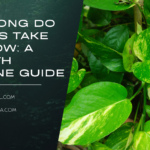Types of Terrariums: A Complete Overview
“Discover the different types of terrariums in this complete overview. Learn about open, closed, and specialty terrariums, including plant choices, care tips, and DIY projects.”
The main types of terrariums include open terrariums, closed terrariums, hanging terrariums, succulent terrariums, aquatic terrariums, and specialty terrariums like Wardian cases.
Key Takeaway Box:
| Terrarium Type | Best for | Key Plants | Care Level |
| Open Terrariums | Dry, well-lit spaces | Succulents, cacti | Low to moderate care |
| Closed Terrariums | Humid environments | Ferns, mosses, tropical plants | Moderate care |
| Hanging Terrariums | Airy spaces | Air plants, small succulents | Low care |
| Succulent Terrariums | Arid conditions | Various succulents | Low care |
| Aquatic Terrariums | Water-based plants, fish | Aquatic plants, moss balls | Moderate to high care |
| Specialty Terrariums | Unique displays | Depends on style | Varies |
Introduction
Terrariums are miniature, self-sustaining ecosystems housed in transparent containers. These enclosed environments allow for the cultivation of various plant species, creating a beautiful and functional piece of living art. Whether you’re a seasoned gardener or just starting out, terrariums offer a unique way to bring greenery into your home. They are particularly popular in urban settings where space is limited, and they provide an excellent opportunity to explore the world of indoor gardening.
Choosing the right type of terrarium is crucial to ensure that your plants thrive. The different types of terrariums—open, closed, hanging, succulent, aquatic, and specialty—each have their own unique characteristics, benefits, and care requirements. This comprehensive guide will walk you through everything you need to know about these various terrarium types, helping you make an informed decision and enjoy a successful terrarium experience.
What is a Terrarium?
Definition and History
A terrarium is essentially a small, enclosed environment designed to replicate the natural conditions of certain ecosystems, allowing plants to thrive in a controlled setting. The concept of terrariums dates back to the 19th century, when Dr. Nathaniel Bagshaw Ward, a London-based physician, accidentally discovered that ferns and other plants could thrive in sealed glass containers. This discovery led to the creation of the Wardian case, a precursor to modern terrariums, which became popular in the Victorian era for transporting and displaying exotic plants.
Basic Components
A terrarium typically consists of the following components:
- Container: The transparent enclosure, usually made of glass or plastic, which allows light to enter and creates a greenhouse effect.
- Soil: A well-draining substrate that supports plant growth and retains moisture.
- Plants: Various plant species that are chosen based on the type of terrarium and the environmental conditions it replicates.
- Decorative Elements: Rocks, moss, figurines, and other items that add aesthetic value and help recreate natural landscapes.
Open Terrariums
Description
Open terrariums are designed without a lid or cover, allowing for free air circulation. This type of terrarium is ideal for plants that thrive in drier conditions, as it does not trap moisture like closed terrariums do. Open terrariums are often used to house succulents, cacti, and other plants that require good airflow and minimal humidity.
Best Plants for Open Terrariums
When selecting plants for an open terrarium, consider species that prefer dry conditions and can tolerate direct sunlight. Some popular choices include:
- Succulents: Echeveria, Sedum, Haworthia
- Cacti: Mammillaria, Opuntia, Astrophytum
- Air Plants (Tillandsia): These require minimal soil and can thrive in the open air.
Care Tips
- Watering: Open terrariums require less frequent watering than closed terrariums. Water only when the soil is completely dry, usually every 1-2 weeks.
- Lighting: Place your open terrarium in a bright location where it can receive plenty of indirect sunlight. Avoid direct sunlight, as it can cause the glass to overheat and damage the plants.
- Maintenance: Regularly remove any dead leaves or debris to prevent mold and pests. Prune plants as needed to maintain their shape and size.
DIY Open Terrarium Project
Creating your own open terrarium is a simple and rewarding project. Here’s a step-by-step guide:
- Choose a Container: Select a glass container with an open top, such as a bowl, jar, or geometric terrarium.
- Add Drainage: Start by adding a layer of small rocks or pebbles at the bottom to provide drainage and prevent water from pooling.
- Add Soil: Add a layer of well-draining soil mix, preferably one designed for succulents and cacti.
- Plant Selection: Arrange your chosen plants in the soil, starting with the largest plant and working your way down to smaller ones.
- Decorate: Add decorative elements like moss, stones, or miniature figurines to enhance the aesthetic appeal.
- Water Lightly: Water the plants sparingly, ensuring that the soil is only slightly damp.
- Place and Enjoy: Position your terrarium in a bright, indirect light location and enjoy your miniature garden.
Closed Terrariums
Description
Closed terrariums are sealed environments that create their own microclimate, characterized by high humidity and a self-sustaining water cycle. The lid or cover of a closed terrarium traps moisture inside, which then condenses and returns to the soil, creating a humid environment ideal for tropical plants. This type of terrarium is perfect for those who enjoy lush, green landscapes and want a low-maintenance indoor garden.
Best Plants for Closed Terrariums
Plants that thrive in high humidity and low light conditions are best suited for closed terrariums. Some excellent choices include:
- Ferns: Boston Fern, Maidenhair Fern
- Mosses: Sheet Moss, Cushion Moss
- Tropical Plants: Fittonia (Nerve Plant), Peperomia, Pilea
- Carnivorous Plants: Venus Flytrap, Sundew, Pitcher Plant
Care Tips
- Watering: Closed terrariums require very little watering due to the self-sustaining water cycle. Water lightly when first setting up, then monitor moisture levels and water only if the soil appears dry.
- Lighting: Place your closed terrarium in an area with bright, indirect light. Avoid direct sunlight, which can cause the terrarium to overheat and create excessive moisture.
- Maintenance: Prune plants regularly to prevent overcrowding and remove any yellowing or decaying foliage. If condensation becomes excessive, briefly open the terrarium to allow air circulation.
DIY Closed Terrarium Project
Building a closed terrarium is an enjoyable and creative project. Follow these steps:
- Select a Container: Choose a glass container with a lid, such as a jar, fishbowl, or cloche.
- Layering: Start with a layer of pebbles or activated charcoal at the bottom to provide drainage and prevent mold growth.
- Add Soil: Add a layer of soil suitable for tropical plants, about 2-3 inches deep.
- Planting: Arrange your plants in the soil, considering their size and growth patterns. Begin with taller plants at the back and smaller ones at the front.
- Decorate: Add moss, rocks, or other decorative elements to create a natural look.
- Watering: Lightly water the soil, ensuring it is moist but not soggy.
- Seal and Place: Close the lid and place your terrarium in a bright location with indirect sunlight. Enjoy your low-maintenance, self-sustaining garden.
Hanging Terrariums
Description
Hanging terrariums are a stylish and modern way to display plants in your home. These terrariums are typically housed in glass or plastic globes that are suspended from the ceiling or wall. Hanging terrariums are perfect for small spaces and can add a touch of greenery to any room without taking up valuable surface space.
Best Plants for Hanging Terrariums
Plants that do well in hanging terrariums are typically those that require minimal soil and can thrive in an open-air environment. Some suitable plants include:
- Air Plants (Tillandsia): These are the most popular choice for hanging terrariums due to their low maintenance and unique appearance.
- Small Succulents: Echeveria, Crassula, and other compact succulents are great options.
- Trailing Plants: String of Pearls, String of Hearts, and other trailing plants can add a cascading effect.
Care Tips
- Watering: Depending on the plants used, water lightly. Air plants typically need to be misted or soaked in water every 1-2 weeks, while succulents require watering less frequently.
- Lighting: Hanging terrariums should be placed in areas with bright, indirect light. Avoid direct sunlight, which can cause the plants to overheat.
- Maintenance: Regularly check the plants for signs of stress, such as browning tips or wilting. Prune as needed to maintain a tidy appearance.
DIY Hanging Terrarium Project
Creating a hanging terrarium is a fun and easy way to add some greenery to your home. Here’s how to make one:
- Choose a Globe: Select a hanging glass globe or orb with an opening large enough to accommodate your plants.
- Add a Base Layer: Place a small amount of sand, gravel, or decorative stones at the bottom of the globe for drainage and decoration.
- Plant Selection: Carefully place your plants inside the globe. For air plants, simply position them as desired without adding soil. For succulents, add a thin layer of soil before planting.
- Decorate: Add small decorative items like moss, pebbles, or shells to enhance the look.
- Hang: Use a strong string, wire, or chain to hang your terrarium in a location with appropriate light.
- Care: Water or mist your plants as needed based on their specific requirements.
Succulent Terrariums
Description
Succulent terrariums are specifically designed to house various types of succulents, which are known for their fleshy, water-retentive leaves and stems. These terrariums are typically open to allow for proper airflow, preventing the plants from becoming too humid, which can lead to rot. Succulent terrariums are popular due to their low-maintenance nature and the wide variety of colors, shapes, and sizes that succulents offer.
Best Succulents for Terrariums
When selecting succulents for your terrarium, choose species that stay relatively small and have similar care requirements. Some popular options include:
- Echeveria: Known for its rosette shape and vibrant colors.
- Haworthia: A small, slow-growing succulent with distinctive patterns.
- Sedum: Low-growing succulents with small, fleshy leaves.
- Jade Plant (Crassula ovata): A popular succulent with thick, glossy leaves.
Care Tips
- Watering: Succulents are drought-tolerant and should be watered sparingly. Water only when the soil is completely dry, usually every 2-3 weeks.
- Lighting: Succulents require bright, indirect light to thrive. Place your terrarium near a window where it can receive plenty of light without being exposed to direct sunlight for extended periods.
- Maintenance: Remove any dead leaves or debris to prevent mold and pests. Prune as necessary to maintain the desired shape and size of the plants.
DIY Succulent Terrarium Project
Building a succulent terrarium is a simple and enjoyable project. Follow these steps:
- Select a Container: Choose an open container such as a glass bowl, dish, or jar.
- Add a Drainage Layer: Start with a layer of pebbles or gravel at the bottom to allow excess water to drain away from the roots.
- Add Soil: Use a well-draining soil mix designed for succulents and cacti. Fill the container about halfway.
- Planting: Arrange your succulents in the soil, starting with the largest plants and working your way to the smallest. Make sure to leave space between plants to allow for growth.
- Decorate: Add decorative elements like sand, rocks, or small figurines to personalize your terrarium.
- Water Sparingly: Water the succulents lightly, making sure the soil is barely moist.
- Place and Enjoy: Position your terrarium in a bright spot with indirect sunlight and enjoy your low-maintenance indoor garden.
Aquatic Terrariums
Description
Aquatic terrariums, also known as paludariums or aquariums, are unique in that they incorporate both water and land elements, creating a habitat for aquatic plants and sometimes fish. These terrariums can range from small, simple setups to large, complex environments that mimic natural aquatic ecosystems. Aquatic terrariums are ideal for those who enjoy the tranquility of water features and want to incorporate living plants into their aquarium setup.
Best Plants for Aquatic Terrariums
When choosing plants for an aquatic terrarium, select species that thrive in water or very moist conditions. Some suitable plants include:
- Anubias: A hardy aquatic plant that grows well in low light conditions.
- Java Fern: A popular choice for aquariums due to its low maintenance and attractive appearance.
- Moss Balls (Marimo): Small, spherical algae that add a unique touch to aquatic setups.
- Cryptocoryne: A genus of aquatic plants known for their diverse leaf shapes and colors.
Care Tips
- Water Quality: Maintain clean, filtered water to prevent algae growth and keep plants healthy. Regularly test water parameters such as pH, hardness, and nitrates.
- Lighting: Aquatic plants generally require moderate to high light levels. Use an aquarium light that provides the appropriate spectrum for plant growth.
- Maintenance: Trim plants regularly to prevent overgrowth and remove any decaying plant material to maintain water quality.
DIY Aquatic Terrarium Project
Creating an aquatic terrarium is a rewarding project that brings the beauty of underwater life into your home. Here’s how to set one up:
- Choose a Container: Select an aquarium or glass container with enough space to accommodate both water and land areas if desired.
- Add Substrate: Start with a layer of aquarium gravel or sand as a base. You can also add rocks or driftwood for decoration.
- Planting: Position your aquatic plants in the substrate, making sure to anchor their roots securely.
- Fill with Water: Carefully fill the container with water, being mindful not to disturb the plants. Use dechlorinated water or a water conditioner if necessary.
- Lighting and Filtration: Install an aquarium light and a filter to maintain water quality and provide the necessary light for plant growth.
- Maintenance: Regularly check the water quality and perform partial water changes to keep the environment healthy.
Specialty Terrariums (Wardian Cases, Desert, etc.)
Description
Specialty terrariums are unique setups that don’t fit into the conventional categories of open, closed, hanging, or aquatic terrariums. These can include historical replicas like Wardian cases, desert terrariums, or thematic terrariums that are designed around a specific idea or style. Specialty terrariums offer an opportunity to get creative and design a truly one-of-a-kind indoor garden.
Unique Plant Choices
Depending on the type of specialty terrarium you choose, you can incorporate a wide variety of plants. Here are some ideas:
- Wardian Cases: Typically house ferns, mosses, and other plants that thrive in humid, enclosed environments.
- Desert Terrariums: Feature a mix of cacti, succulents, and other drought-tolerant plants.
- Thematic Terrariums: Could be designed around a particular theme, such as a fairy garden, bonsai landscape, or tropical paradise, with plants chosen to match the theme.
Care Tips
- Wardian Cases: Maintain high humidity and low light, similar to closed terrariums. Monitor moisture levels and prune plants to prevent overcrowding.
- Desert Terrariums: Provide plenty of light and minimal water. Use sandy, well-draining soil and choose plants that can handle arid conditions.
- Thematic Terrariums: Care requirements will vary depending on the theme and plant selection. Tailor the environment to meet the specific needs of the plants you choose.
DIY Specialty Terrarium Project
Building a specialty terrarium allows for creativity and personalization. Here’s how to create one:
- Choose a Theme and Container: Decide on the type of specialty terrarium you want to create and select an appropriate container. For example, a Wardian case, a wide glass bowl for a desert terrarium, or a decorative container for a thematic setup.
- Layering: Depending on the type of terrarium, start with a drainage layer, soil, or sand. For desert terrariums, use a sandy soil mix, and for Wardian cases, a rich, well-draining soil.
- Plant Selection: Choose plants that fit your theme and are suited to the environment you’re creating. Arrange them in a way that enhances the aesthetic appeal of the terrarium.
- Decorate: Add decorative elements like rocks, figurines, or miniatures to complete the theme.
- Water and Place: Water as needed based on the plant types and place the terrarium in a location that provides the appropriate light levels.
Choosing the Right Terrarium for Your Space
Considerations
When selecting a terrarium type, consider the following factors:
- Available Space: Evaluate the space you have available for the terrarium. Hanging terrariums are great for small spaces, while larger, closed terrariums can serve as focal points in a room.
- Light Conditions: Assess the natural light in the room. Open terrariums and succulent terrariums need bright light, while closed terrariums thrive in low to medium light.
- Personal Care Ability: Consider how much time and effort you can dedicate to caring for your terrarium. Succulent and hanging terrariums are low maintenance, while aquatic and closed terrariums may require more attention.
Matching Plants to Terrariums
It’s essential to match the right plants to the correct terrarium type for optimal growth and aesthetics. Use this guide:
- Bright Light and Low Water: Succulent Terrariums
- High Humidity and Low Light: Closed Terrariums
- Minimal Maintenance: Hanging Terrariums with Air Plants
- Water-Based Setup: Aquatic Terrariums
Common Mistakes to Avoid
Overwatering
One of the most common mistakes in terrarium care is overwatering. Too much water can lead to root rot, mold, and plant death. Always check the moisture level of the soil before watering, and remember that most terrariums require less water than traditional potted plants.
Incorrect Plant Selection
Choosing the wrong plants for your terrarium can lead to disappointment. Ensure that the plants you select have similar care requirements and are suited to the type of terrarium you’re creating. For example, do not mix succulents with tropical plants, as they have different humidity and watering needs.
Improper Lighting
Providing the right amount of light is crucial for plant health. Terrariums placed in too much direct sunlight can overheat, while those in too little light can result in leggy, unhealthy plants. Understand the light needs of your chosen plants and place your terrarium accordingly.
Maintenance and Troubleshooting
General Maintenance Tips
- Pruning: Regularly trim your plants to prevent overcrowding and promote healthy growth.
- Cleaning: Keep the glass of your terrarium clean to ensure maximum light penetration and prevent algae growth in aquatic setups.
- Monitoring: Check your terrarium regularly for signs of mold, pests, or plant stress. Address any issues promptly to maintain a healthy environment.
Troubleshooting Common Issues
- Mold: If mold appears, remove the affected area and increase ventilation by temporarily removing the lid or placing the terrarium in a drier location.
- Pests: If you notice pests, such as aphids or mites, remove the affected plants and treat them with a natural insecticide.
- Plant Health: If plants appear unhealthy, assess their light, water, and soil conditions. Adjust as necessary to improve their environment.
FAQs About Types of Terrariums
-
What is the difference between open and closed terrariums?
- Open terrariums allow for airflow and are best for dry, arid plants like succulents, while closed terrariums create a humid environment ideal for tropical plants.
-
Can you mix different types of plants in one terrarium?
- It’s best to group plants with similar care requirements together. Mixing plants with different needs can lead to challenges in maintaining the right environment for all species.
-
How often should you water a terrarium?
- Watering frequency depends on the type of terrarium and plants. Open terrariums generally need watering every 1-2 weeks, while closed terrariums may require watering only once every few months.
-
What are the best plants for a beginner-friendly terrarium?
- Succulents, air plants, and ferns are great choices for beginners due to their low maintenance requirements.
-
How do I prevent mold in my terrarium?
- Ensure proper ventilation, avoid overwatering, and remove any decaying plant material promptly to prevent mold growth.
-
Do terrariums need direct sunlight?
- Most terrariums thrive in bright, indirect light. Direct sunlight can cause the glass to act as a magnifying glass, overheating the plants.
-
What are the best containers for terrariums?
- Glass containers with wide openings are ideal for open terrariums, while closed containers with lids are perfect for creating a humid environment.
-
Can I add animals to my terrarium?
- Small, non-aggressive animals like snails or tiny frogs can be added to certain terrariums, but their care needs must be considered.
-
What should I do if my plants are dying?
- Assess the terrarium’s environment, including light, water, and soil conditions. Adjust as needed and consider replacing the plants with species better suited to the terrarium type.
Conclusion
Terrariums offer a versatile and beautiful way to bring nature indoors, whether you’re looking to create a lush tropical paradise, a minimalist succulent garden, or a unique aquatic ecosystem. By understanding the different types of terrariums and their specific care requirements, you can choose the best option for your space and enjoy the rewarding experience of maintaining a miniature garden.
Explore more articles on creating and caring for different types of terrariums, subscribe to our newsletter for the latest tips and DIY projects, and check out our recommended terrarium supplies to get started on your own terrarium journey today!




